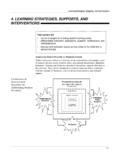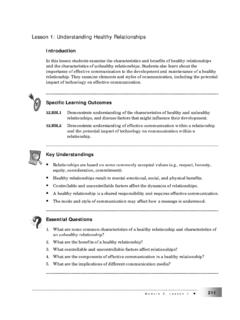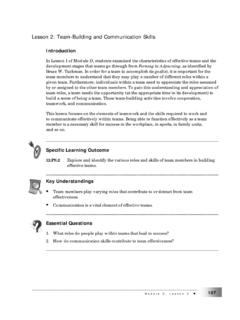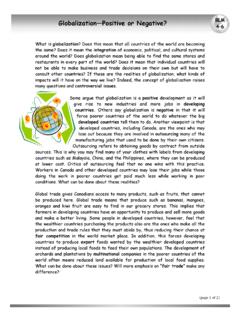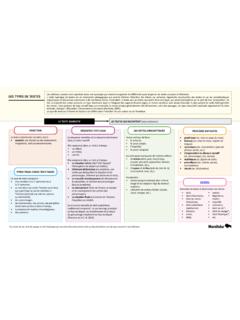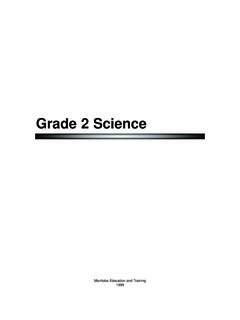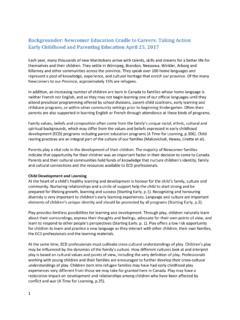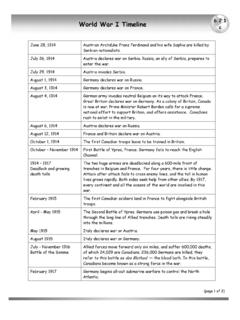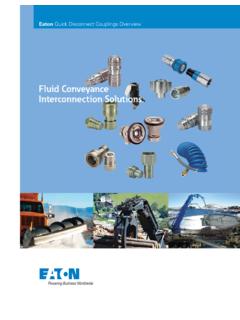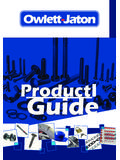Transcription of ISB6.7 CM2350 B101 for School Bus Applications - …
1 CM2350 b101 for School Bus Applications 2014 Source Of The Engine Name The CM2350 b101 engine names are derived from many sources: The IS portion of the name represents the Interact System. The Interact System is Cummins automotive/on-highway full-authority electronic engine control system. The B portion of the name represents the engine family. The ISB is part of the B series mid-range engine family. The portion represents the engine displacement. The CM2350 portion of the name represents the engine control system. The b101 suffix means that this engine equipped with EPA 2013 On-Board Diagnostics (OBD) and following aftertreatment hardware: Exhaust Gas Recirculation (EGR) Aftertreatment Outlet NOx Sensor Diesel Oxidation Catalyst (DOC) Aftertreatment Diesel Particulate filter (DPF) Aftertreatment Diesel Exhaust Fluid (DEF) Quality Sensor Integrated Aftertreatment Dosing Control Unit Aftertreatment Airless Selective Catalytic Reduction (SCR) Aftertreatment intermediate NH3 Sensor Aftertreatment Outlet NOx Sensor Base Engine Specifications: The CM2350 is a liter displacement inline 6 cylinder engine.
2 Firing order: 1-5-3-6-2-4 Rear gear train only Engine operation voltage 12 V and 24 volts. All required components are available in 12 and 24 volts: CM2350 ECM Grid heaters Aftertreatment NOx Sensors VGT actuator DEF Supply Module Starter , Alternator Base Engine Specifications: Model, BHP, Peak Torque Lb-t@RPM , Governed RPM School Bus Applications 200 520@1600 2600 220 520@1600 2600 240 560@1600 2600 250 660@1600 2600 260 660@1600 2600 280 660@1600 2600 300 660@1600 2600 Engine Dataplate Location And Information: The dataplate contains the following information: Engine serial number, Control parts list (CPL), Model, Horsepower and rpm rating. If the engine dataplate is not readable, the engine serial number can be identified on the engine block on top of the lubricating oil cooler housing. Additional engine information is available by reading the ECM dataplate.
3 Engine Quick Identifiers: The CM2350 ECM with two connectors : A ninety six pin Engine harness connector A ninety six pin OEM harness connector Aftertreatment System: New aftertreatment system sensors Aftertreatment Intermediate NH3 Sensor Diesel Exhaust Fluid (DEF) Quality Sensor (Optional) Datalinked Temperature Sensors Dosing Control Module eliminated (Integrated with CM2350 ECM) Air Handling New intake air throttle New programmable turbocharger actuator Engine Systems The following sections will cover the systems and components of the engines including: Mechanicals Air system Cooling system Lubrication system Fuel system MECHANICALS 8 Front Gear Cover The front gear cover houses the lubricating oil pump, front crankshaft seal, and camshaft speed indicator ring. The front gear covers also contains the oil pressure switch, camshaft speed/position sensor, and crankshaft speed/position sensor. 9 Front Crankshaft Seal The front crankshaft seal is a dual or non-lip style seal which utilize a built in wear sleeve and a concealed sealing lip.
4 Because the rotating portion of the seal does not contact the crankshaft, wear will not occur at the crankshaft but instead internal to the seal. No wear sleeve or oversize front crankshaft seal is available 10 Crankshaft Seal, Front - Install Use tool, Part Number 3164659, to install the oil seal into the front gear cover. Mount the replacer screw assembly onto the crankshaft nose. Install the two M12 x x 60 mm socket head capscrews. Place the new front crankshaft seal over the crankshaft nose and slide it by hand toward the front gear cover as far as possible. NOTE: Make sure the seal is positioned square with the crankshaft. While holding the replacer screw, install the crankshaft seal replacer onto the replacer screw assembly. Advance the crankshaft seal replacer toward the seal by rotating it clockwise until it is positioned against the seal. While holding the crankshaft seal replacer, rotate the replacer screw counterclockwise until the crankshaft seal replacer contacts the front gear cover.
5 11 Rear Crankshaft Seal Lip-style rear crankshaft seal 12 Rear Crankshaft Seal - Continued Each new rear crankshaft seal will come with 2 disposable seal drivers One for Front Gear Train Engine (1) One for Rear Gear Train Engine (2) The rear crankshaft seal is installed in the flywheel housing bore, 2 installation methods available 13 Rear Crankshaft Seal - Install 14 Rear Crankshaft Seal Replacer Kit, Part #3164660 Part # Description Q-ty 3164666 Replacer screw assembly 1 3164664 Crankshaft seal replacer 1 3164174 Socket head capscrew, M12 x 25 mm 2 3164217 Sheet metal screw, Number mm [1 in] long 25 Disposable plastic driver (purchased with rear crankshaft seal kit) 1 Rear Gear Train 15 Vibration Damper and Crankshaft Speed Indicator Ring Viscous damper is standard Vibration damper and crankshaft speed indicator ring are a permanent assembly When either damaged replace as assembly 16 Rocker Levers Mounted on a common rocker shaft Receives pressurized oil for lubrication from a drilling in the rocker shaft Each rocker lever actuates two valves by the crosshead Each rocker lever has two drillings: One drilling supplies lubrication oil to the push rod Other drilling supplies lubrication oil to e-foot 17 Crosshead Same as used on all 4 valve per cylinder B product The crosshead allows the rocker lever to move both exhaust or intake valves at the same time.
6 The crosshead receives its lubrication from a drilling in the rocker lever and rocker shaft 18 Overhead Set Overhead setting is only required at the interval specified in the appropriate Operation and Maintenance / Owners manuals, or, When engine repairs cause removal of the rocker levers and/or loosening of the adjusting screws. 19 Overhead Set TDC 1 1I, 1E, 2I, 3E, 4I, and 5E. TDC 6 2E, 3I, 4E, 5I, 6I, and 6E. Intake in Exhaust in 20 Rocker Lever Housings Two options: Standard (rocker cover mounted breather) Features two electrical connectors connectors are part of the rocker cover gasket Low Clearance (flywheel mounted breather) Three pass through connectors in rocker housing Three small wiring harnesses connect pass-through connectors to injectors 21 Rocker Lever Cover Crankcase Breather mounted in the rocker cover Same as used on many current increased displacement ISB series product Has a permanently attached breather baffle (1) Crankcase gases exist at the rear of the rocker lever cover and enter the crankcase breather tube Solids/liquids drain back into the crankcase through a tube connecting the breather to the top of the rear-gear housing 22 Open Crankcase Breather System 23 Consists of a housing, breather element, and drain tubes Maintenance.
7 2,500 hrs or 75,000 miles AIR INTAKE AND EXHAUST SYSTEM Air Intake Diagram 25 Air Intake Connection Two drillings for easier cleaning Change made on 2010 product Same Differential pressure sensor for B & L ENGINE INTAKE THROTTLE ACTUATOR Intake throttle actuator is used on the midrange engines provides better air control for EGR mixing The ITA acts as an EGR assist device to reduce pumping losses to EGR flow and exhaust restriction Allows for greater optimization of engine timing. Closing the ITA limits the intake (boost) air and reduces the pressure the EGR flow works against ITA closes when EGR and VGT are not capable of providing the commanded EGR flow without assistance 27 ENGINE INTAKE THROTTLE ACTUATOR Actuator controls the movement of the throttle plate. The position of the engine intake throttle actuator moves between fully open (100 percent) and fully closed (0 percent). Normally Open / Spring Loaded Expected Actuator Position At key off 100 % At engine start - 90 % While the engine is running, the engine intake throttle actuator should never be fully open (100 %)
8 Actuator position could be monitored with INSITE ENGINE INTAKE THROTTLE ACTUATOR - Codes Actuator Codes 175 - Electronic Throttle Control Actuator Driver Circuit - Voltage above normal, or shorted to high source 176 - Electronic Throttle Control Actuator Driver Circuit - Voltage below normal, or shorted to low source 177 - Electronic Throttle Control Actuator - Mechanical system not responding or out of adjustment Position Sensor Codes 3539 - Engine Intake Throttle Actuator Position Sensor Circuit - Voltage above normal, or shorted to high source 3541 - Engine Intake Throttle Actuator Position Sensor Circuit - Voltage below normal, or shorted to low source 3542 - Engine Intake Throttle Actuator Position Sensor - Data erratic, intermittent or incorrect 29 Exhaust Diagram 30 Variable Geometry Turbocharger Images shown are from CM2350 31 Variable Geometry Turbochargers Function The Variable Geometry Turbochargers primary function is to build boost pressure more quickly to improve transient response.
9 The VG turbo can also be used to increase the exhaust manifold backpressure. This increased backpressure is used to force a portion of the exhaust gases through the EGR system. This helps to increase the pressure on the exhaust gas over that of the boosted air from the charge-air-cooler. The VGT can also be used to provide exhaust braking. 32 VGT Components 33 Speed Sensor turbine and housing Mechanism Ring Plate compressor and housing 1 1 2 2 3 3 VGT Actuator 34 The VGT Actuator has built in electronics that send information to the ECM about its travel capabilities. The travel capabilities include total range of movement (fully opened/ fully closed) the amount of energy required to accomplish movement and current position of the actuator. All of these electronic capabilities of the actuators provide diagnostic and fault code reporting through the ECM. Fully Closed Nozzle Ring With the nozzle ring fully closed the turbine volute exit area is at its minimum.
10 This creates the maximum exhaust manifold pressure. Turbocharger shaft speed and boost pressure are at there highest. 35 Sector gear setup Smaller frame size turbo on the ISL (same as B, but with Top mount actuator) New Actuator Re-flashable There will be markings on the bearing housing for sector gear travel checks and installation alignment Pinon gear on actuator may not rotate during actuator initial installation step INSITE/Calibration May cause confusion compared to previous product that had the pinion gear move for alignment 36 Variable Geometry Turbocharger - Remove Preparatory Steps: NOTE: Be sure the coolant is completely drained from the engine. After draining the coolant, it may be necessary to unhook the turbocharger coolant return hose. Steam clean the area around the turbocharger actuator and dry with compressed air. Drain the coolant. Apply compressed air to push coolant out of the cavity between the turbocharger bearing housing and the actuator.

